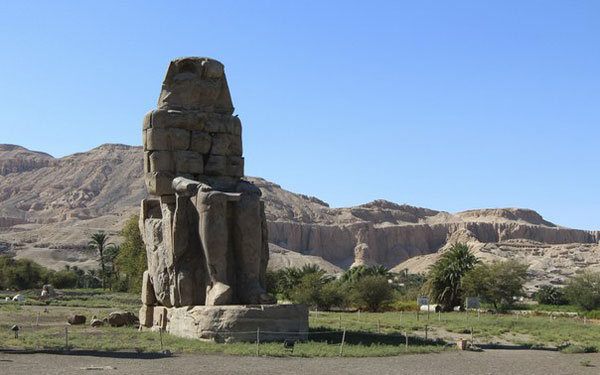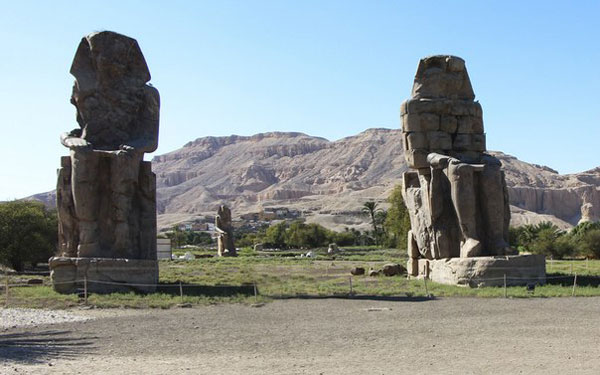The Colossi of Memnon (Arabic: el-Colossat or es-Salamat) are two massive stone statues of the Pharaoh Amenhotep III, who reigned in Egypt during Dynasty XVIII. For the past 3,400 years (since 1350 BC), they have stood in the Theban Necropolis, located west of the River Nile from the modern city of Luxor.
Memnon was a hero of the Trojan War, a King of Ethiopia who led his armies from Africa into Asia Minor to help defend the beleaguered city but was ultimately slain by Achilles. Memnon (whose name means "the Steadfast" or "Resolute") was said to be the son of Eos, the goddess of dawn. He was associated with the colossi because of the reported cry at dawn of the northern statue (see below), which became known as the Colossus of Memnon. Eventually, the entire Theban Necropolis became generally referred to as the Memnonium making him "Ruler of the west" as in the case of the god Osiris who was called chief of the west.











